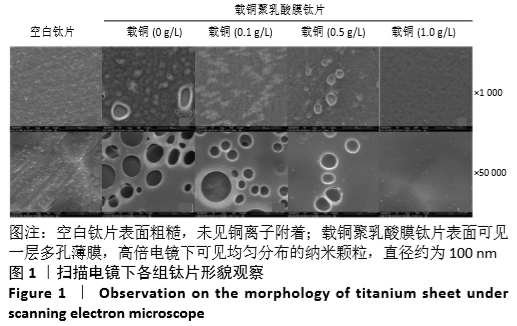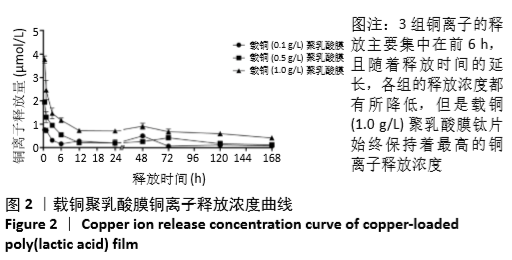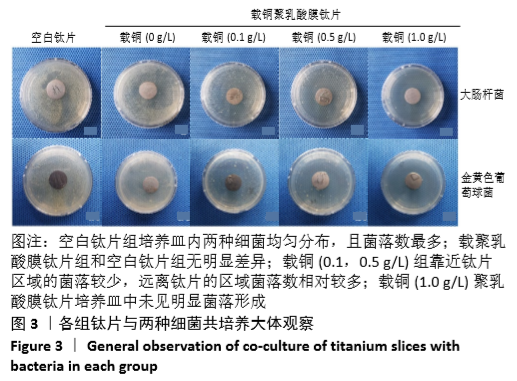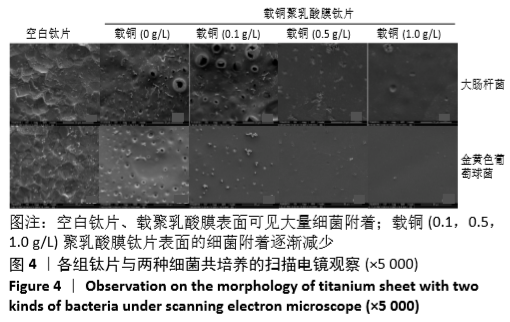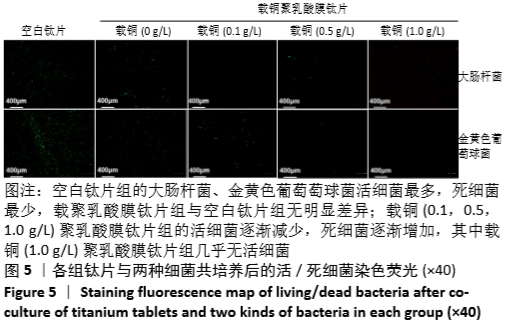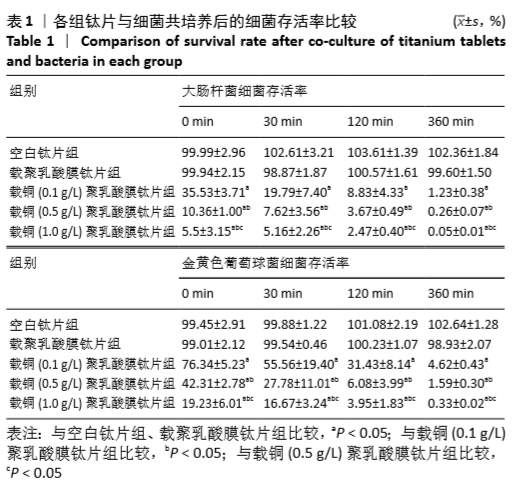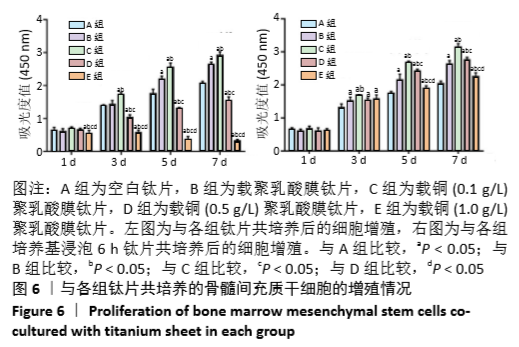中国组织工程研究 ›› 2021, Vol. 25 ›› Issue (4): 553-557.doi: 10.3969/j.issn.2095-4344.2368
• 膜生物材料 membrane biomaterials • 上一篇 下一篇
钛表面载铜抗菌功能膜的制备及性能
李兴平1,2,3,肖东琴2 ,赵 桥1,2 ,陈 硕2,白亦光2,刘 康2,冯 刚1,2,段 可1
- 1西南医科大学附属医院骨科,四川省泸州市 646000;2川北医学院第二临床医学院·南充市中心医院组织工程与干细胞研究所,四川省南充市 637000;3成飞医院骨科,四川省成都市 610031
Preparation and properties of copper-loaded antibacterial functional film on titanium surface
Li Xingping1, 2, 3, Xiao Dongqin2, Zhao Qiao1, 2, Chen Shuo2, Bai Yiguang2, Liu Kang2, Feng Gang1, 2, Duan Ke1
- 1Department of Orthopedics, Affiliated Hospital of Southwest Medical University, Luzhou 646000, Sichuan Province, China; 2Institute of Tissue Engineering and Stem Cell, Nanchong Central Hospital, the Second Clinical Medical College of North Sichuan Medical College, Nanchong 637000, Sichuan Province, China; 3Department of Orthopedics, Chengfei Hospital, Chengdu 610031, Sichuan Province, China
摘要:
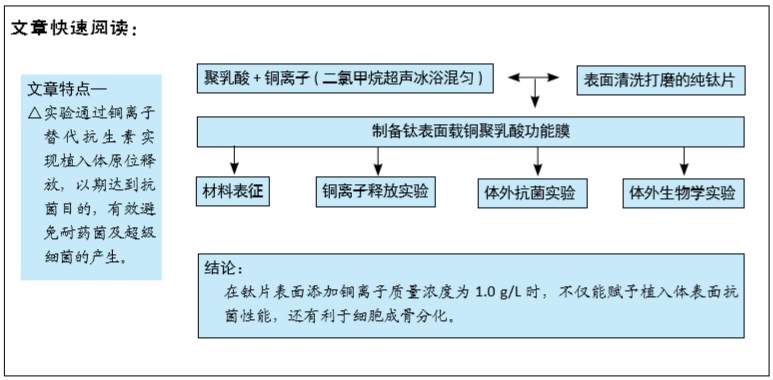
文题释义:
细菌保护膜:植入体表面黏附的细菌伴随植入物进入机体后在植入物周围形成的一层膜,此膜能为细菌的生长提供有利的微环境,阻止各种细胞免疫、抗生素及潜在防御机制对其穿透,从而导致各种相应并发症,例如感染范围扩大、宿主的整体排斥反应及相邻骨骼的骨溶解吸收等。
钛表面改性:通过在钛表面制备不同的理化涂层和生物活性涂层,使其理化性质发生改变,满足临床应用需求的方法。
背景:钛金属植入物凭借其较好的组织相容性及生物惰性被广泛运用于当代骨科领域,但单纯的钛植入物难以满足复杂的临床需求,如细菌感染、骨再生速度慢等,故亟需开发具有生物功能的钛植入物。
目的:鉴于铜离子在抗菌方面发挥的重要作用,在钛金属表面制备载铜功能膜,评价其体外抗菌功能及细胞活性。
方法:通过浸涂方式在钛片表面制备含不同质量浓度铜离子(0,0.1,0.5,1.0 g/L,依次设定为B、C、D、E组)的聚乳酸薄膜。将金黄色葡萄球菌、大肠杆菌分别与纯钛片(A组)及4种载聚乳酸膜钛片共培养,大体与扫描电镜观察细菌菌落形成及黏附情况,活/死细菌染色观察细菌状态。将骨髓间充质干细胞分别与5组钛片(或5种浸泡DMEM培养基6 h后的钛片样品)共培养,采用CCK-8法评价细胞增殖能力。
结果与结论:①大体观察显示,A、B组培养皿内的菌落数量最多,且均匀分布;C、D组靠近钛片区域的菌落数量减少,远离钛片区域的菌落数量较多,E组未见明显菌落形成;扫描电镜显示,A、B组表面黏附大量的细菌,C、D、E组表面黏附的细菌逐渐减少;②活/死细菌染色显示,A、B组细菌存活率均在95%以上,C、D、E组细菌存活率均在5%以下,且随着膜内铜离子浓度的增加细菌存活率降低;③细胞与钛片接触共培养的CCK-8检测显示,与A组比较,C组骨髓间充质干细胞增殖明显,D、E组细胞增殖受到抑制;细胞与浸泡后钛片样品共培养的CCK-8检测显示,与A组比较,C、D、E组细胞增殖明显;④结果表明,当聚乳酸溶液中铜离子质量浓度为0.1 g/L时,在钛金属表面制备的聚乳酸薄膜促细胞增殖能力最强,但杀菌能力相对较弱;在铜离子质量浓度为1.0 g/L时,聚乳酸薄膜的杀菌能力最强,DMEM浸泡6 h后无细胞毒性。因此,在钛片表面制备含适宜浓度的载铜聚乳酸薄膜能赋予植入体表面抗菌性能。
https://orcid.org/0000-0003-0139-2432 (李兴平)
中国组织工程研究杂志出版内容重点:生物材料;骨生物材料; 口腔生物材料; 纳米材料; 缓释材料; 材料相容性;组织工程
中图分类号:
